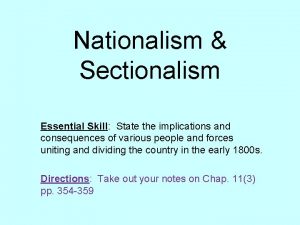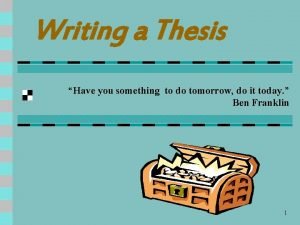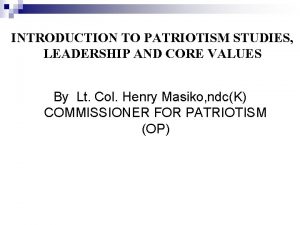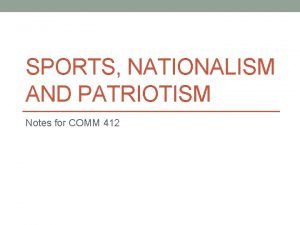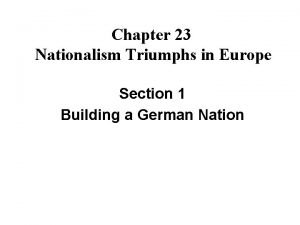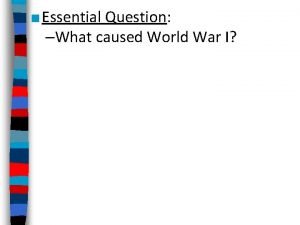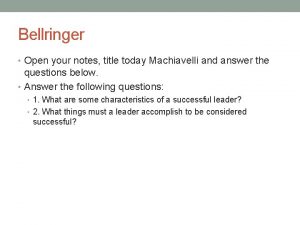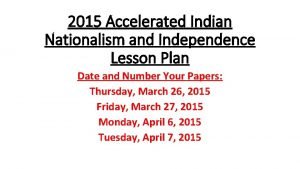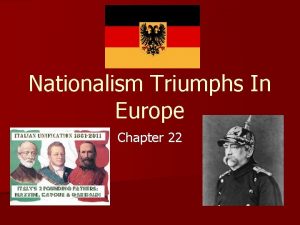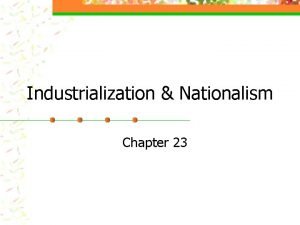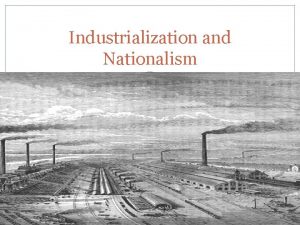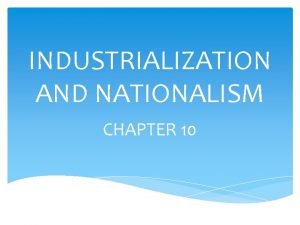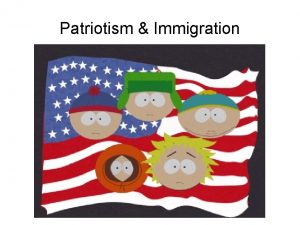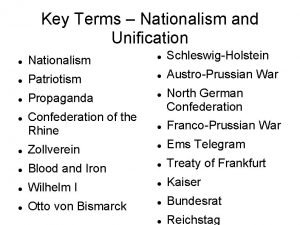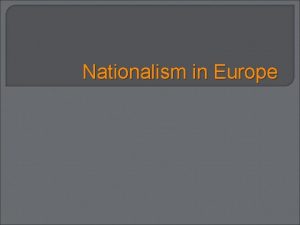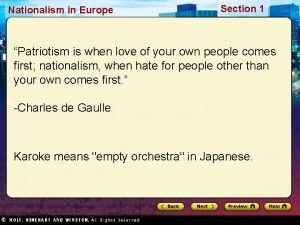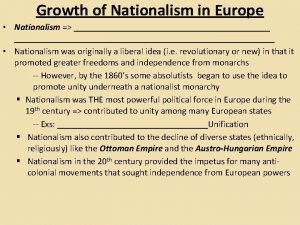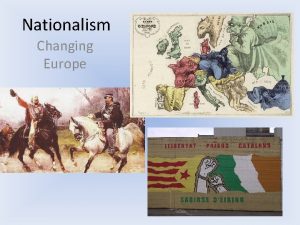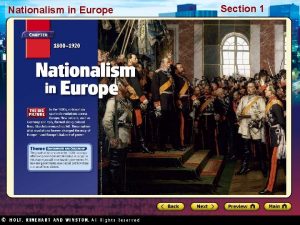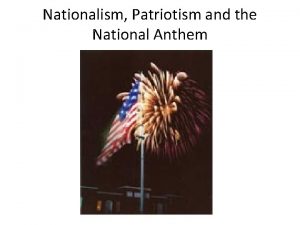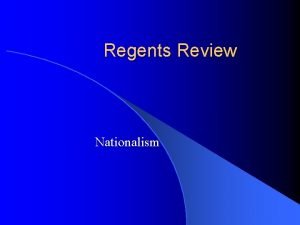CHAPTER 24 NATIONALISM IN EUROPE Nationalism PATRIOTISM the















- Slides: 15

CHAPTER 24: NATIONALISM IN EUROPE

Nationalism PATRIOTISM � the love someone feels for their country that is based on the idea that this country itself is good and that good people live there NATIONALISM � the love and affection for one’s country, but it’s based on the idea that this particular country is better than all the rest.

� Elements of Nationalism � Culture: shared beliefs and a way of life create a common bond � History: a shared past connects people as a group � Religion: a common religion helps unite people � Language: a common language is a key element of nationalism � Territory: a shared land gives people a sense of unity

24. 1 – Italian Unification � Italian Peninsula had not been unified since fall of the Roman Empire � Most spoke same language, but peninsula divided into competing states, each with own government � Then, Napoleon invaded Italy � After Napoleon’s defeat, Congress of Vienna split Italian states

� Nationalism inspired uprisings in 1848 � Some states rebelled against Austrian rule � By 1860, northern Italy had freed itself from control of the Austrian Empire � Unification � Cavour and Garibaldi united Italy with the Two Sicilies Most of the Papal States joined soon after

� � Garibaldi was known as the “sword” of Italian unification because of his use of guerilla tactics to gain control of the southern Italian states. Through his actions, he showed his commitment to the unification of Italy.

� Challenges � Regional differences kept the nation from being truly united � The pope forbade Catholics from voting � Social tensions were building � Widespread poverty caused many Italians to emigrate � Only wealthy males could vote � Working class was beginning to campaign for change

24. 2 – German Unification � Early Steps � Napoleon (yes, again) � Congress of Vienna (yes, again) created the German Confederation � Revolutions of 1848 � Germany was not a unified nation in 1848, although the patchwork of independent states did have a common language and culture. � Creation of Zollverein � A customs union created that removed tariffs on products traded between German states

� � Otto von Bismarck, conservative politician, was a leading force behind German unification and became prominent in Prussian politics Politics of reality evident in push to increase Prussian military power Speech to Parliament: German unity not won by speeches, majority vote but by “blood and iron” Built Prussian army into great war machine and went to war with Denmark and Austria

� Unification � Austro-Prussian War joined together north German states � Franco-Prussian War united southern German states with the north � German Empire � Created a federalist government with 25 separate states with Wilhelm I as head of the government � Bismarck worked to limit the power of the Catholic Church in Germany � Joined in alliances with Austria-Hungary, Italy, and Russia

24. 3 – Austria-Hungary and the Ottoman Empire � Austria � Against nationalist activities � Congress of Troppau attempted to unite European nations against nationalist revolutions � Resignation of Metternich and the Austrian emperor � Hungary � 1848 revolution stopped by Austria � Dual Monarchy created in 1867 making Austria and Hungary two separate and equal states under one ruler Ethnic groups remained divided

� Ottoman Empire � Nationalist groups began revolutions in the Balkans, war cost Ottoman Empire most of its land in Europe In Crimea, the Ottomans and Europeans had a dispute over Holy Land (yes, again) �Ended in a stalemate with half a million dead In the Balkans, several cultural groups began fighting for independence �Russia got involved because they wanted access to the Mediterranean � Young Turks began revolution in 1908, leading to more representative and liberal government

24. 4 – Unrest in Russia � Government and Society � Czars were autocrats � Serfdom was a problem in Russian society � Reform and Repression � Decembrist Revolt fought against czar’s rule � Alexander II freed the serfs � Pogroms were violent attacks against the Jews � Industry developed rapidly under Nicholas II � Trans-Siberian Railroad built

� War and Revolution � Russo-Japanese War � Marxist ideas of a socialist republic spread � Blood Sunday killings inspired Revolution of 1905 against the czar � October Manifesto promised reform and democratic government after revolution, but czar still maintained significant power

END
 Patriotism vs nationalism venn diagram
Patriotism vs nationalism venn diagram Generalization persuasive technique
Generalization persuasive technique Unscramble thesis
Unscramble thesis Core values of patriotism
Core values of patriotism Patriotism and education are traditional american values.
Patriotism and education are traditional american values. Patriotism notes
Patriotism notes Nationalism triumphs in europe
Nationalism triumphs in europe What caused wwi
What caused wwi Bellringer security
Bellringer security Nationalism in europe lesson plan
Nationalism in europe lesson plan Nationalism triumphs in europe
Nationalism triumphs in europe Nationalism triumphs in europe
Nationalism triumphs in europe Chapter 23 industrialization and nationalism
Chapter 23 industrialization and nationalism Guided reading activity industrialization and nationalism
Guided reading activity industrialization and nationalism -have strength to match the growth of industrialization
-have strength to match the growth of industrialization Chapter 35 nationalism and political identities in asia
Chapter 35 nationalism and political identities in asia
